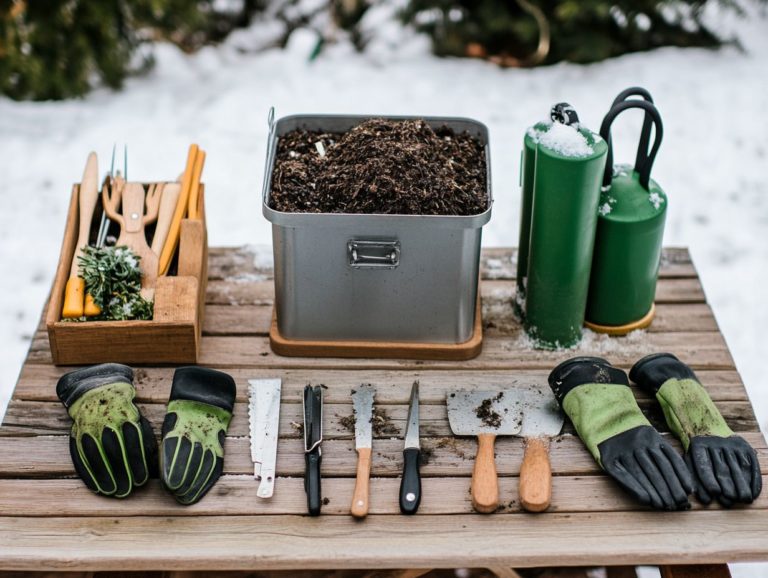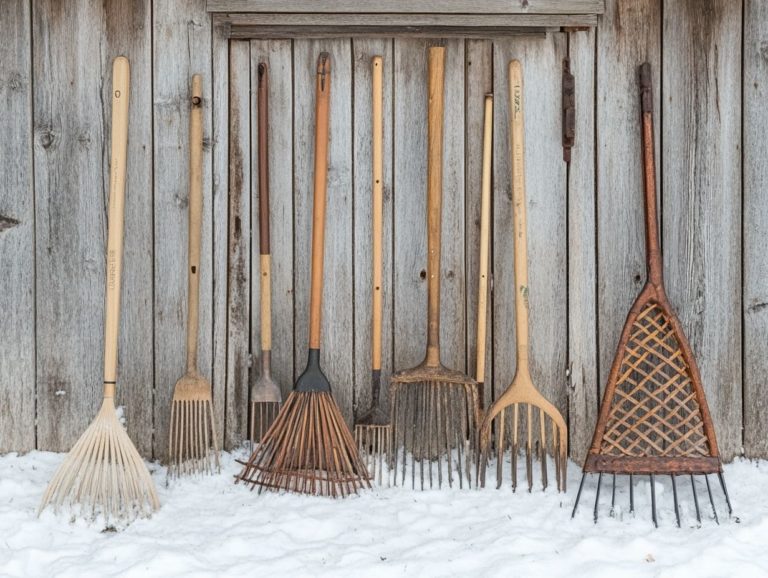Choosing the Right Mulcher for Cold Climates
Maintaining your garden in colder climates requires understanding mulchers. Grasping the ins and outs of these machines is absolutely essential.
This article explores what mulchers are and the various types available. It also guides you on how to choose the best one for your specific weather conditions.
We cover important factors to consider, share top recommendations, and provide effective mulching tips for those chilly days. You’ll also find valuable insights on essential maintenance and storage practices to keep your mulcher in peak condition throughout the winter months.
Explore now to find the perfect mulcher for your winter gardening adventure!
Contents
- Key Takeaways:
- Understanding Mulchers
- Factors to Consider for Cold Climates
- Best Mulcher Options for Cold Climates
- Mulching Tips for Cold Climates
- Maintenance and Storage for Cold Climate Mulchers
- Frequently Asked Questions
- What are the main factors to consider when choosing a mulcher for cold climates?
- What type of blades are recommended for cold climates?
- Why is engine power important for mulchers in cold climates?
- What type of fuel should I use for my mulcher in cold climates?
- What is the recommended mulching capacity for cold climates?
- Are there any additional features to look for in a mulcher for cold climates?
Key Takeaways:
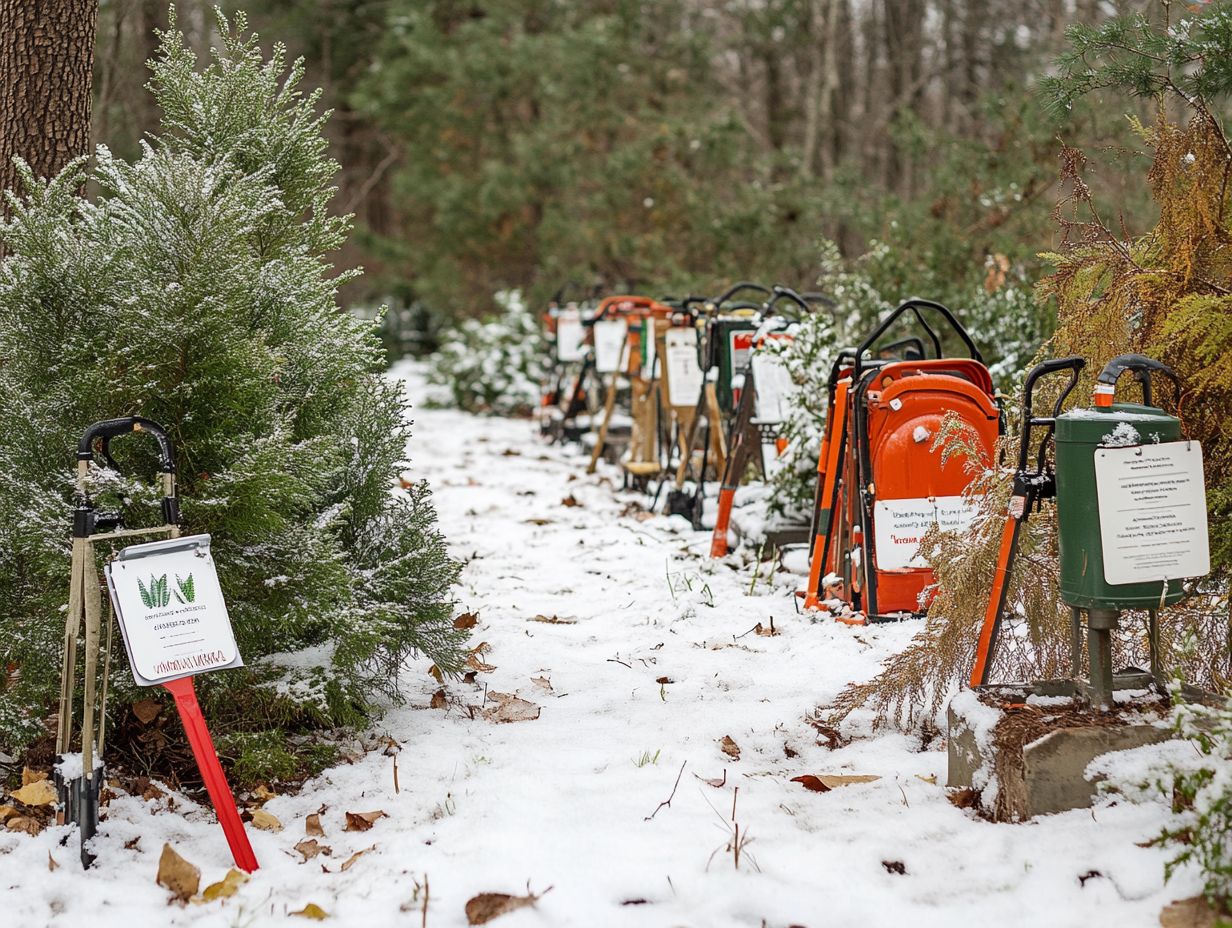
- Choose a mulcher suitable for cold climates by considering factors such as climate, weather conditions, and materials designed for cold weather use, particularly in Virginia.
- Properly mulch in cold weather by following tips like using the correct mulching technique and adjusting the mulcher’s settings for optimal performance.
- Ensure the longevity of your cold climate mulcher through proper maintenance and storage, including winterizing it before storing it for the season.
Understanding Mulchers
Understanding mulchers is essential for effective land clearing and vegetation management. Consider the environmental impact of your projects.
These machines come in a range of models tailored to fit your specific project size and terrain. This ensures strong performance under various conditions.
Mulchers range from compact models ideal for tight spaces to heavier drum mulchers with sharp steel teeth designed to tackle tougher vegetation. Your choice of equipment influences not only the efficiency of the job but also the health of the soil and surrounding ecology.
Evaluate user-friendly features and maintenance costs. Address fire hazards and invasive species that can impact local wildlife.
What is a Mulcher?
A mulcher is a specialized piece of equipment designed to break down vegetation and organic material. It makes vegetation management easy in various environments.
These machines typically have strong components, such as mulching teeth sharp parts that help cut plants and drum mulchers. They tackle dense vegetation very efficiently.
Whether you re engaged in forestry, land clearing, or environmental restoration, mulchers are vital for maintaining ecosystem balance.
They excel at controlling invasive species, enabling the elimination of unwanted plants that jeopardize local biodiversity.
By finely shredding this vegetation, mulchers do more than just clear the land. They enhance soil health by returning organic matter to the earth.
This process encourages nutrient cycling and fosters new plant growth, making them invaluable tools for sustainable land management.
Types of Mulchers
You ll find a range of mulchers available, each tailored for specific applications. Think compact models for snug spaces and robust drum mulchers for larger projects.
Forestry mulchers shine when it comes to clearing dense vegetation and trees, making them perfect for expansive land-clearing tasks. These machines usually have wider cutting widths, allowing you to cover extensive areas quickly.
If you’re working in tighter environments, compact models are designed for agility. They are a versatile option for landscaping and smaller clearing jobs.
When choosing the right skid-steer brands, options like Bobcat or Caterpillar integrate smoothly with various mulcher types.
Open drum designs are particularly praised for their efficiency. They provide effective cutting while allowing debris to escape easily, minimizing clogs and enhancing productivity.
Factors to Consider for Cold Climates
When operating mulchers in cold climates, it s important to consider several important factors. These include the specific weather conditions, the risks of soil compaction (which occurs when soil particles are pressed together, reducing the space for air and water), and the potential fire hazards that can arise.
Understanding these elements is vital for achieving effective vegetation management while remaining eco-friendly and cost-effective. Adverse weather can significantly impact machine performance, making it necessary to seek specialized features designed to combat soil compaction and ensure reliable operation.
You need to plan strategically to mitigate fire hazards, particularly in areas thick with dry vegetation. This makes it imperative to select the right equipment and techniques tailored to those challenging environments.
Climate and Weather Conditions
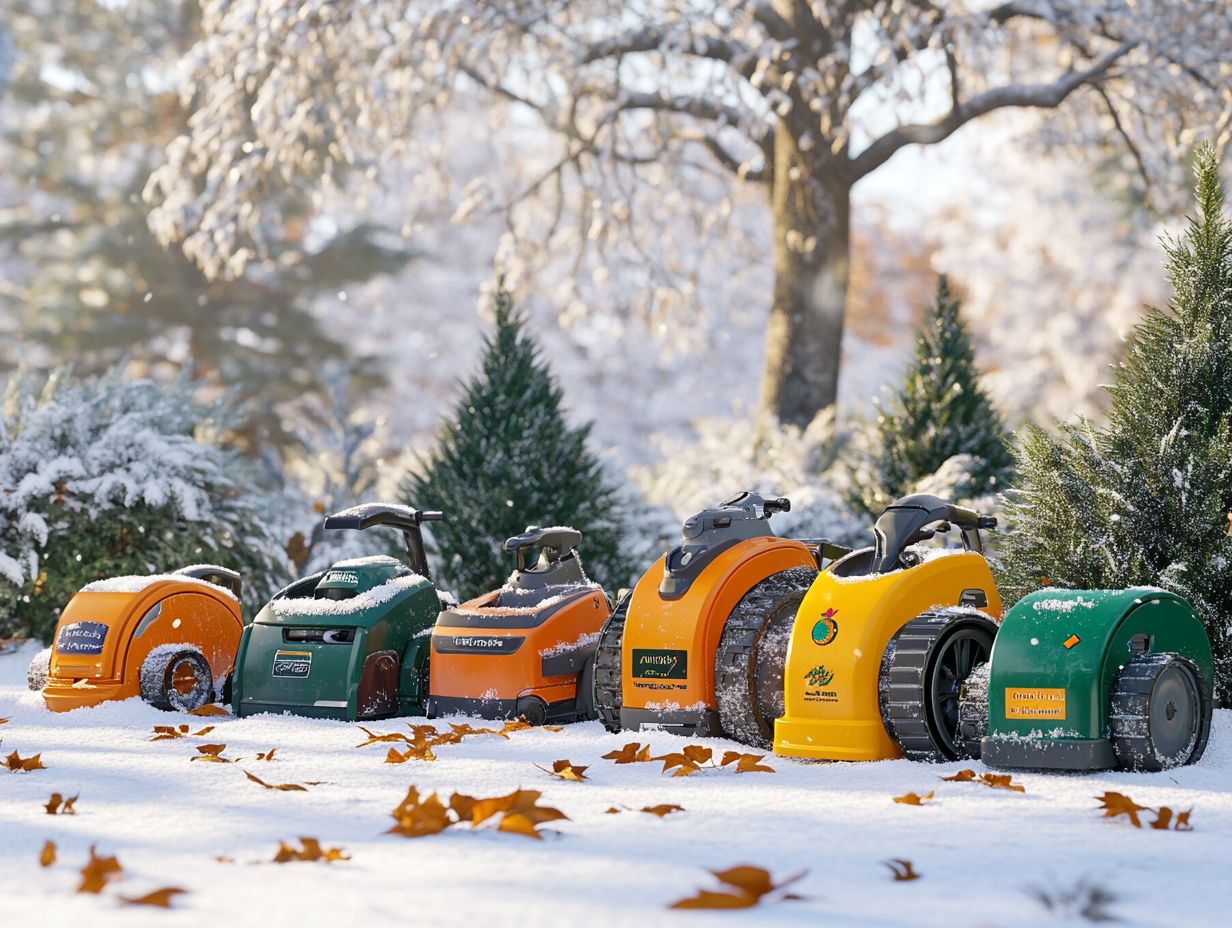
Climate and weather conditions are crucial in determining how effectively mulchers perform in cold climates, so it’s important to understand how to choose the right spade for cold climates.
When temperatures dip, ice and snow can significantly impede mulcher performance, creating slick surfaces that introduce operating issues. The machinery may struggle to gain traction, leading to potential delays in your projects and increased wear on your equipment. Heavy snowfall can also obstruct visibility and access, complicating the clearing process even further.
Conversely, rainfall brings its own challenges, often setting the stage for fire hazards when dried foliage is processed. Moisture levels can affect mulching efficiency, altering the decomposition process and ultimately impacting future soil health. It s essential to consider these weather-related effects when developing your overall mulching strategies.
Materials and Features for Cold Climate Use
Selecting the right materials and features when using mulchers in cold climates is crucial for minimizing soil compaction and overcoming operational challenges. Additionally, choosing the right pesticides for cold climates can enhance your gardening success. This thoughtful selection not only optimizes your machine’s performance but also extends its lifespan, significantly reducing the frequency of repairs.
By opting for durable materials specifically engineered to endure frigid temperatures, you can dramatically decrease maintenance costs. These high-quality components are less prone to wear and tear, ensuring they withstand the rigors of demanding conditions.
Features such as user-friendly controls and efficient maintenance access become invaluable in harsh environments, allowing you to keep your equipment running smoothly with minimal downtime.
Integrating eco-friendly practices into your operational framework fosters sustainability and aligns with contemporary conservation efforts. This approach is beneficial for both you and the environment, creating a win-win scenario.
Best Mulcher Options for Cold Climates
When you’re on the hunt for the finest mulcher options tailored for cold climates, a few models truly rise above the rest. Forestry mulchers and compact models from esteemed manufacturers such as Diamond Mowers are must-haves for your projects.
Top Recommended Mulchers
Top recommended mulchers for cold climates include specialized forestry mulchers and compact models from Diamond Mowers, crafted specifically for effective land clearing in challenging conditions, ensuring optimal depth control and cutting widths. For more insights, check out the importance of mulching in cold climates.
These machines are not just efficient; they re built to tackle the toughest conditions! They come equipped with advanced features like heavy-duty frames and aggressive cutting teeth, ensuring they can effortlessly tackle dense underbrush and stubborn trees.
The Diamond Mowers models deliver robust performance thanks to their powerful engines and optimized weight distribution, granting you superior maneuverability even on snow-laden terrain.
Users consistently praise these models for their reliability and efficiency, making them perfect for vegetation management tasks while minimizing downtime. Their ability to maintain top performance in extreme cold truly sets them apart from standard models, making them a top choice for professionals working in colder regions.
Mulching Tips for Cold Climates
When mulching in cold climates, embrace particular strategies that enhance efficiency and prioritize eco-friendly practices.
This approach helps manage soil compaction effectively while keeping maintenance costs in check.
How to Mulch Properly in Cold Weather

Properly mulching in cold weather requires techniques that minimize soil compaction and prioritize eco-friendly practices.
Be vigilant about potential fire hazards associated with dry mulch. Choose materials such as straw, leaves, or shredded wood. These materials insulate the soil and enrich its organic content as they decompose.
Apply a thick layer to keep the soil warm, but not so thick that it traps moisture and invites mold. Selecting materials that break down naturally supports sustainable gardening and enhances soil quality.
Prioritize safety measures, as dry mulch can pose a fire hazard, especially during low humidity spells. Regularly monitoring conditions helps reduce risks and cultivates a safe, productive gardening environment.
Maintenance and Storage for Cold Climate Mulchers
Effective maintenance and storage of cold climate mulchers are crucial for ensuring their longevity and reducing maintenance costs, especially during harsh winter months.
By giving the necessary attention to these machines, you ensure optimal performance and durability, safeguarding your investment against extreme weather challenges.
Winterizing and Storing Your Mulcher
Winterizing and properly storing your mulcher greatly reduces maintenance costs while extending the life of your machine.
Preparing your mulcher for the colder months shields the equipment from harsh weather and ensures it s ready for action when spring rolls around.
Start by thoroughly cleaning to eliminate debris and mulch clippings. Next, conduct a meticulous inspection of key components like blades and belts. Topping off fluids and replacing the oil is essential to ward off rust and corrosion.
Features like easy-access panels and maintenance reminders simplify this process, encouraging you to establish a routine that maximizes efficiency and performance as the new season approaches.
Frequently Asked Questions
What are the main factors to consider when choosing a mulcher for cold climates?
- Type of blades
- Engine power
- Fuel type
- Mulching capacity
These features determine the mulcher’s efficiency in colder temperatures.
What type of blades are recommended for cold climates?
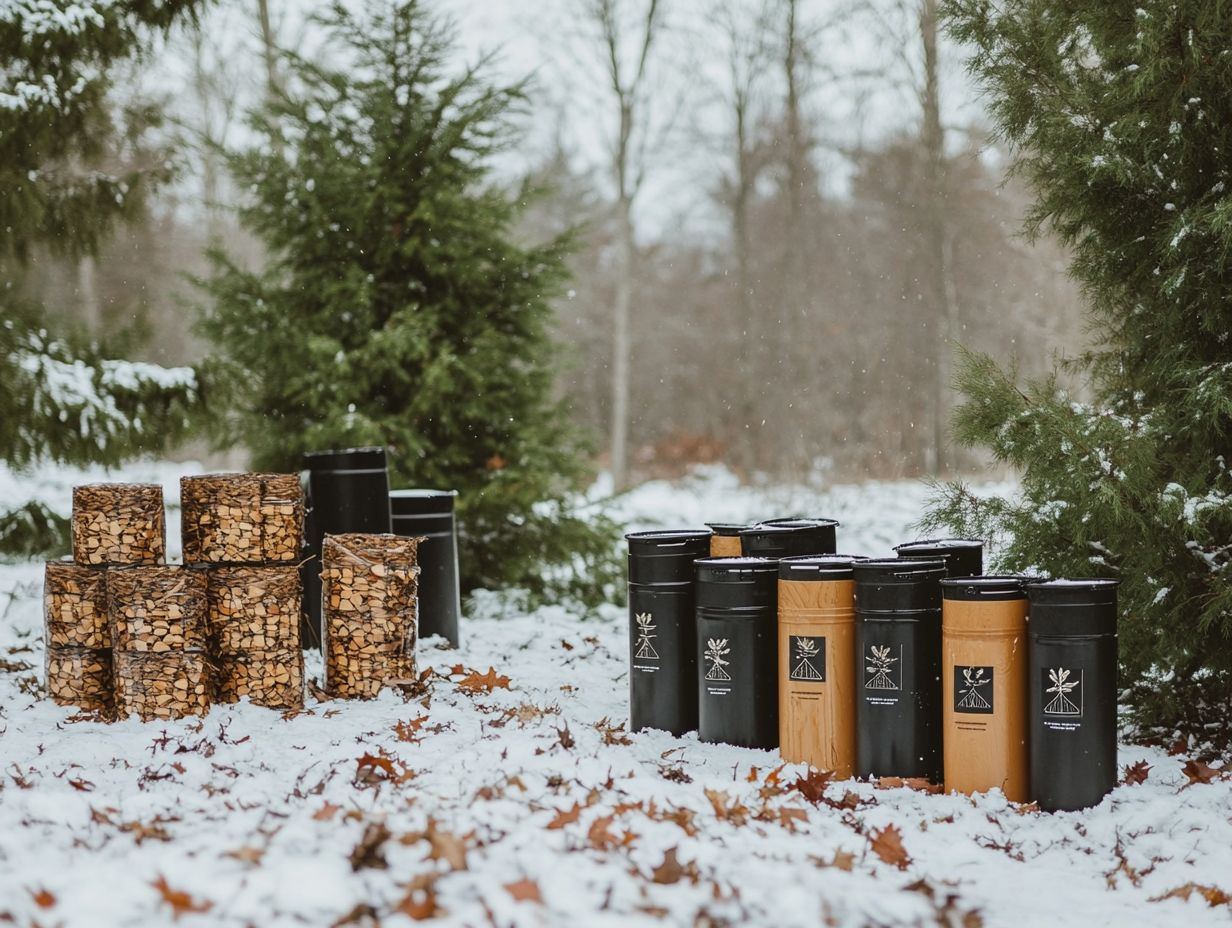
Choose mulchers with carbide-tipped blades, as they are durable and resistant to wear and tear in cold weather. Additionally, consider choosing the right plants for cold climates to enhance your gardening experience.
Why is engine power important for mulchers in cold climates?
In cold climates, the engine works harder to start and operate. Therefore, choose a mulcher with a powerful engine for smooth operation in low temperatures.
What type of fuel should I use for my mulcher in cold climates?
Gasoline is preferred for mulchers in cold climates, as it has a lower freezing point compared to diesel. This helps prevent fuel from freezing and causing potential engine damage.
What is the recommended mulching capacity for cold climates?
Choose a mulcher with a higher mulching capacity in cold climates to prevent clogging and allow for efficient mulching. For more detailed information, refer to our guide to choosing mulch for cold-climate plants.
Are there any additional features to look for in a mulcher for cold climates?
Yes, consider features such as:
- A heated cab
- An anti-freeze system for the engine
- A fuel warmer
These ensure smooth operation and prevent damage in extremely cold temperatures.
Ready to start mulching this winter? Follow these tips to get started!




